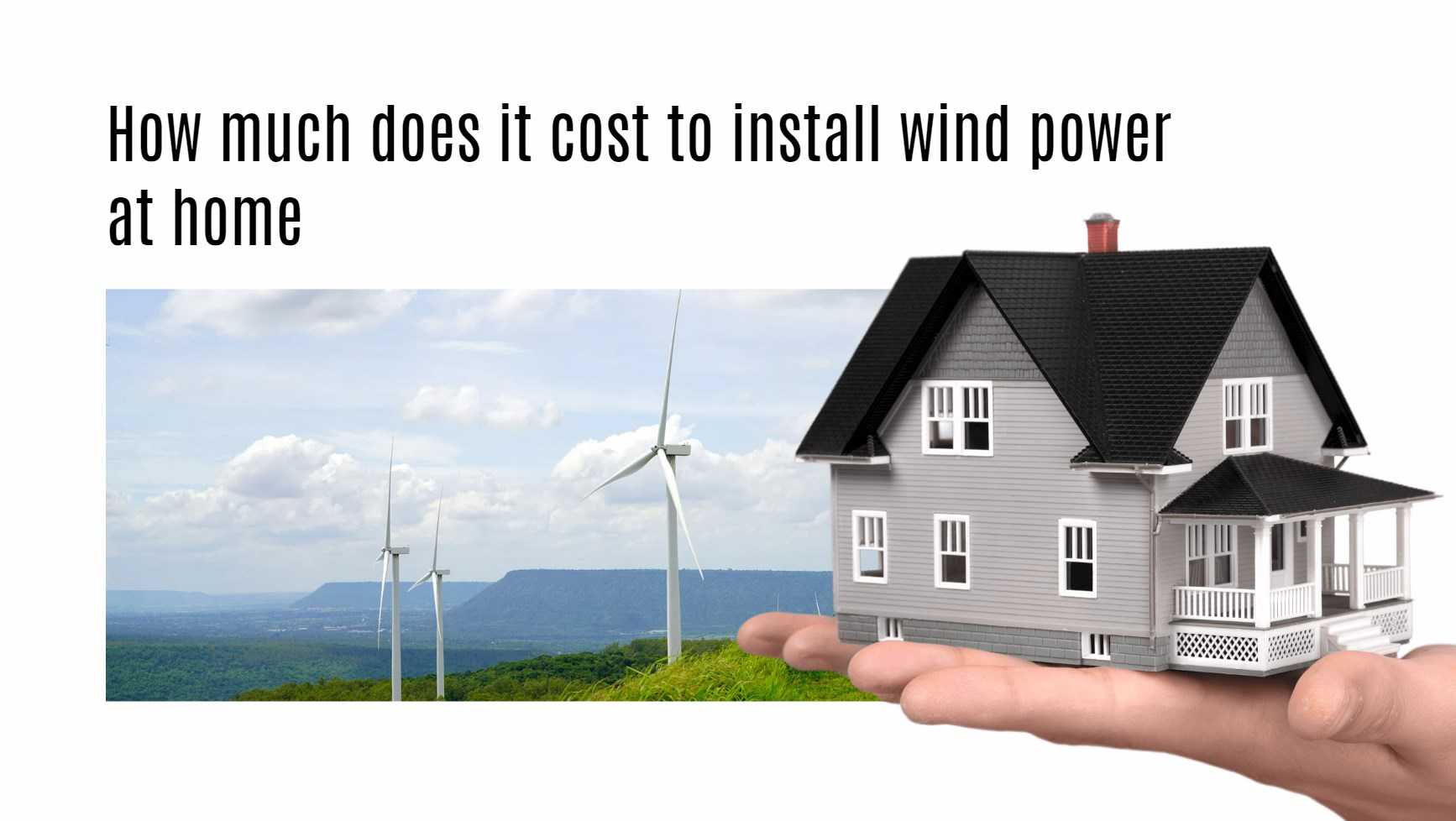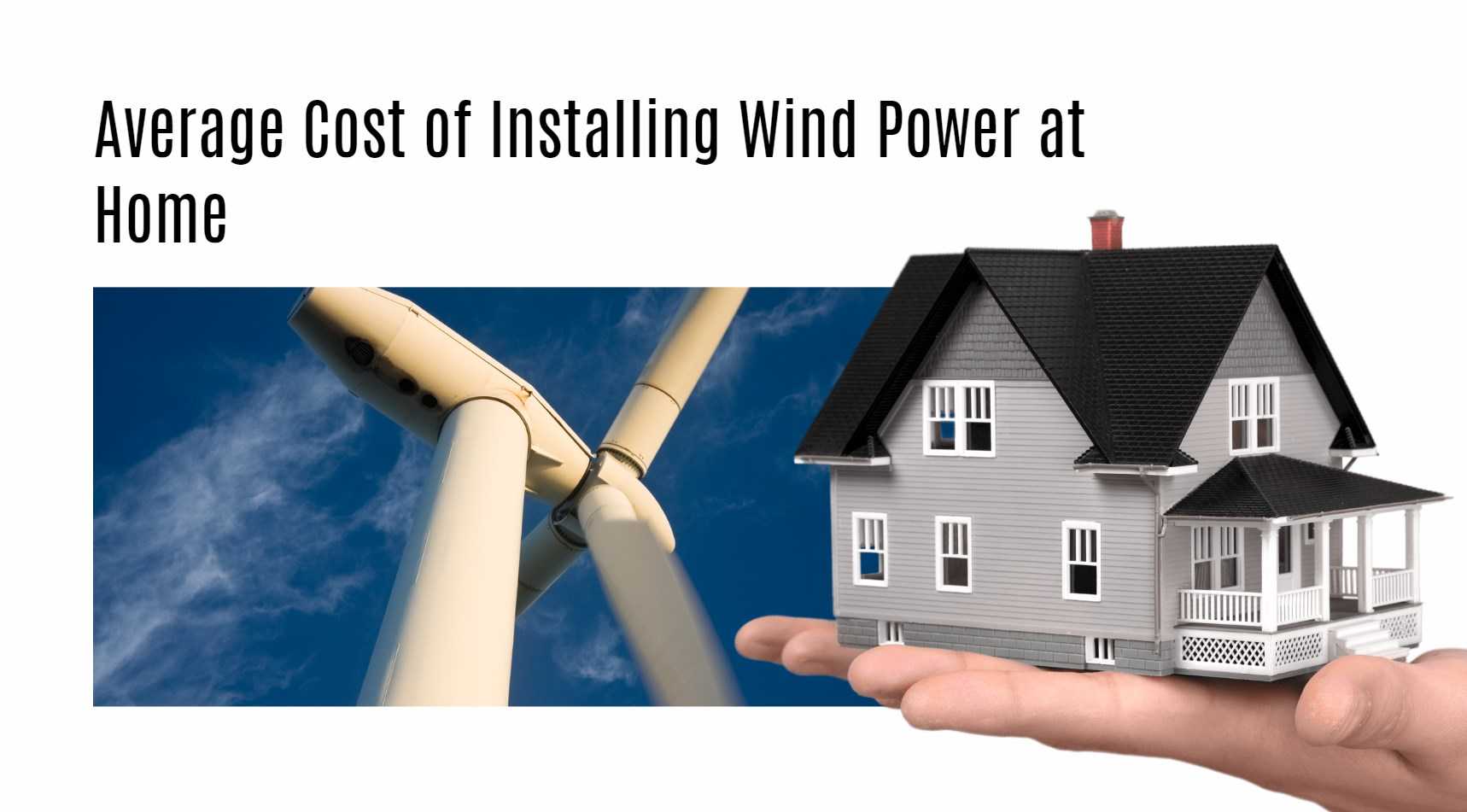Harnessing the power of the wind to generate electricity is not just for giant wind farms anymore. Imagine having your own renewable energy source right in your backyard, quietly spinning away and generating clean, sustainable power for your home. Wind power is a game-changer in the world of renewable energy, offering homeowners a way to reduce their carbon footprint while potentially saving on energy costs. But how much does it actually cost to install wind power at home? Let’s dive into the details to find out!
Factors that Affect the Cost of Installing Wind Power
When considering installing wind power at home, there are several factors that can influence the overall cost of the project. One key factor is the size and capacity of the wind turbine you choose. Larger turbines with higher power output will typically come with a higher price tag than smaller ones designed for residential use.
Another important factor to consider is the location of your property. Wind speed and consistency play a significant role in determining how much energy your turbine can generate, impacting both installation costs and long-term savings. Sites with strong, consistent winds are ideal for maximizing the efficiency of your wind power system.
Wholesale lithium golf cart batteries with 10-year life? Check here.
Additionally, accessibility to your property can affect installation costs. Terrain type, distance from roads for equipment transport, and ease of access for installation crews all play a part in determining labor expenses associated with setting up a wind turbine on your property.
Furthermore, local regulations and permitting requirements can vary depending on where you live, adding potential additional costs to ensure compliance with zoning laws and environmental regulations. These factors should be carefully considered when budgeting for your home wind power project.
Want OEM lithium forklift batteries at wholesale prices? Check here.
Average Cost of Installing Wind Power at Home
When considering the average cost of installing wind power at home, it’s essential to factor in various components that contribute to the overall expense. The size and capacity of the wind turbine play a significant role in determining costs, with larger turbines typically being more expensive but also generating more energy. Additionally, the location of your home can impact installation costs due to factors like accessibility for equipment and wind conditions.
On average, residential wind power systems can range from $15,000 to $75,000 or more for a complete installation. This cost includes not only the turbine itself but also expenses related to permits, installation labor, and necessary electrical work.
Keep in mind that while upfront costs may seem substantial, government incentives and rebates are often available to help offset some of these expenses. By taking advantage of these programs and investing in renewable energy sources like wind power, homeowners can ultimately save money on their utility bills over time while reducing their carbon footprint.
Comparison with Other Renewable Energy Sources
When it comes to renewable energy sources, wind power stands out as a cost-effective and efficient option for homeowners looking to reduce their carbon footprint. While solar power is a popular choice for many, wind turbines can generate electricity even when the sun isn’t shining.
Compared to solar panels, installing a wind turbine may require more space but can potentially generate more electricity in areas with consistent wind patterns. Unlike hydropower that relies on water availability, wind power is not limited by geographical location, making it accessible to a wider range of homeowners.
Additionally, the maintenance costs associated with wind turbines are often lower than those of other renewable energy sources like geothermal systems or biomass boilers. With advancements in technology and increasing affordability, choosing wind power for your home could be a smart long-term investment in sustainability.
Government Incentives and Rebates for Wind Power Installation
Government incentives and rebates play a significant role in making wind power installation more accessible and affordable for homeowners. By offering financial support, tax credits, or rebates, the government encourages individuals to invest in renewable energy sources like wind power.
These incentives can vary depending on where you live, with some regions providing more substantial benefits than others. It’s essential to research what programs are available in your area to take full advantage of potential savings.
In addition to federal incentives, some states or local governments may offer their own specific rebates or tax breaks for installing wind power systems. These additional benefits can further offset the initial costs of setting up a residential wind turbine.
Government incentives and rebates make transitioning to clean energy sources like wind power not only environmentally friendly but also financially beneficial for homeowners looking to reduce their carbon footprint while saving money on utility bills.
DIY vs Professional Installation: Which is More Cost-Effective?
When it comes to installing wind power at home, one of the decisions you’ll need to make is whether to go the DIY route or hire a professional.
DIY installation may seem cost-effective upfront as you won’t have to pay for labor costs. However, keep in mind that installing a wind turbine requires specific expertise and equipment to ensure safety and efficiency.
On the other hand, professional installation guarantees that the job is done correctly by experienced professionals who know all the ins and outs of setting up a wind power system.
While DIY might save you money initially, any mistakes could end up costing more in the long run if repairs or adjustments are needed. Professional installation can offer peace of mind knowing that your wind power system is installed properly from the get-go.
Additional Expenses to Consider in Wind Power Installation
When considering installing wind power at home, it’s essential to factor in additional expenses beyond the initial cost of the system. One significant expense to consider is the maintenance of the turbine. Regular maintenance ensures optimal performance and longevity of your wind power system.
Another expense to keep in mind is obtaining necessary permits and approvals. Depending on where you live, there may be specific regulations and requirements that need to be met before installing a wind turbine on your property.
Additionally, site preparation costs should not be overlooked. Site assessment, foundation installation, and electrical work all contribute to the overall expenses associated with installing wind power at home.
It’s important to budget for potential repairs or replacements in the future. While wind turbines are durable machines designed for long-term use, unexpected issues may arise that require additional spending.
By carefully considering these additional expenses upfront, you can better plan for the total cost of installing wind power at home without any surprises later on.
Long-Term Savings from Using Wind Power at Home
When it comes to using wind power at home, the long-term savings can be significant. Once you’ve made the initial investment in installing a wind turbine or system, your electricity costs can drastically decrease over time. Unlike traditional energy sources that are subject to price fluctuations, harnessing wind power allows you to generate your own clean and renewable energy.
By producing your own electricity through wind power, you become less reliant on the grid and reduce your overall utility bills. Additionally, if your system generates more power than you need, some jurisdictions allow you to sell excess electricity back to the grid through net metering programs. This can result in further savings or even potential income generation.
Moreover, using wind power at home contributes to reducing greenhouse gas emissions and lessening your environmental impact. By embracing sustainable energy practices like wind power, not only do you save money in the long run but also contribute positively towards a greener future for our planet.
Conclusion and Final Thoughts
In the end, installing wind power at home can be a significant upfront investment but offers long-term financial and environmental benefits. It is a sustainable energy solution that can reduce your reliance on traditional grid electricity, lower your carbon footprint, and potentially save you money in the long run. By considering factors like location, turbine size, installation method, and available incentives, you can make an informed decision about whether wind power is the right choice for your home. Remember to weigh the costs against the savings over time to determine if it aligns with your budget and sustainability goals. Harnessing the power of wind could not only benefit you financially but also contribute positively towards a cleaner planet for future generations.







